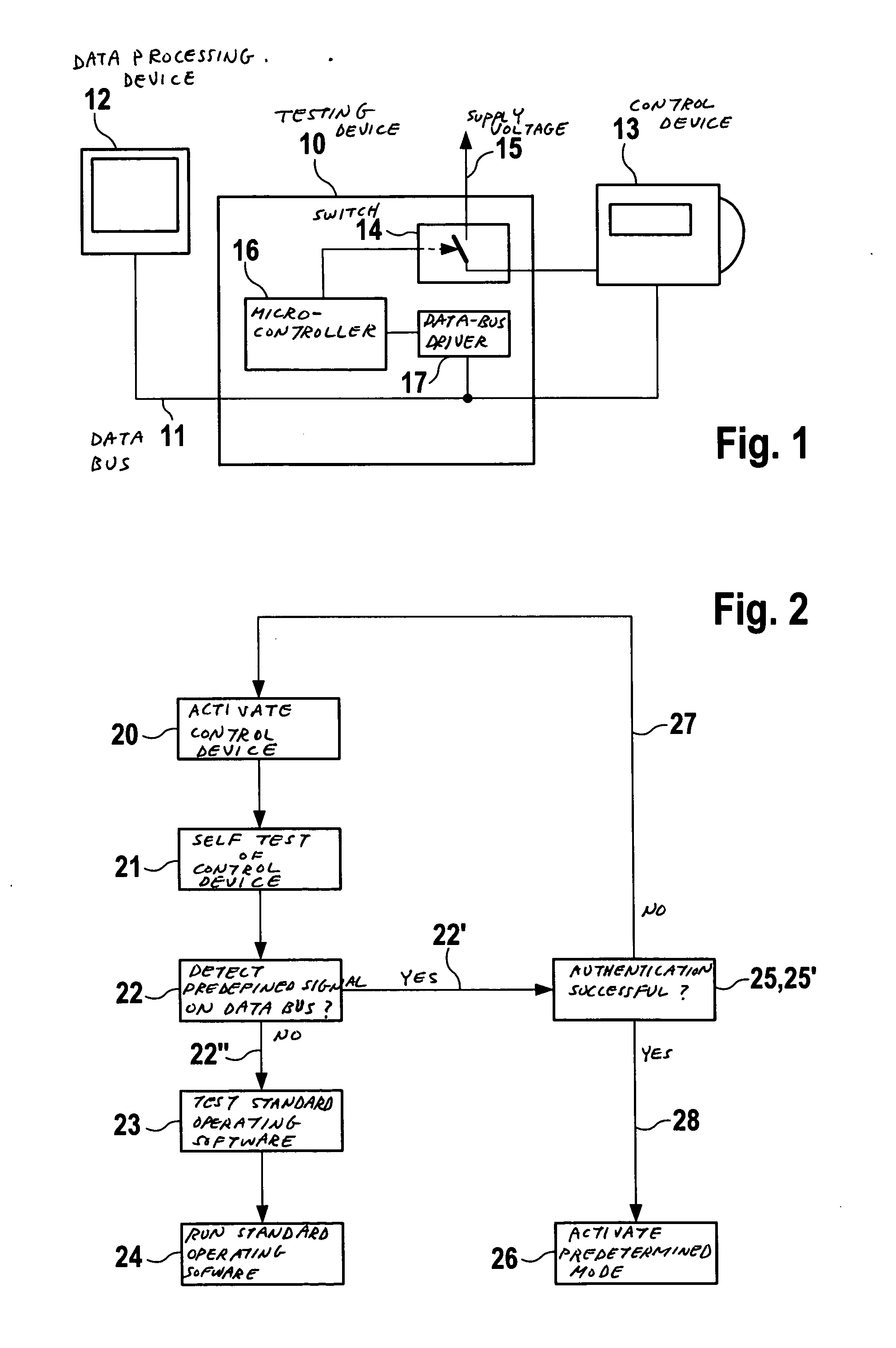Method and device for changing over a first mode of a control device to a second mode, via a data bus
- Summary
- Abstract
- Description
- Claims
- Application Information
AI Technical Summary
Benefits of technology
Problems solved by technology
Method used
Image
Examples
Embodiment Construction
[0018]FIG. 1 shows a testing device 10, which is connected to a data-processing device 12, e.g., a PC, via a data bus 11. Testing device 10 is also connected to a control device 13, e.g., a motor-vehicle control unit, via data bus 11, the motor-vehicle control unit being able to be tested with the aid of testing device 10 and data-processing device 12. Testing device 10 has a switching device 14, e.g., a bipolar transistor, via which control device 13 may be connected to a supply voltage 15, for example 14.5 V. Switching device 14 is coupled to a further control device 16, e.g., a micro-controller. Micro-controller 16 is connected to a data-bus driver device 17, e.g., a CAN driver, which is coupled to data bus 11.
[0019] In order to reset the control device 13, e.g., a sensor control unit (SCU), from a first mode, e.g., a standard operating mode, to a predetermined second mode, e.g., a manufacturer test mode, an entry condition must be fulfilled. This entry condition is generated in...
PUM
 Login to View More
Login to View More Abstract
Description
Claims
Application Information
 Login to View More
Login to View More - R&D
- Intellectual Property
- Life Sciences
- Materials
- Tech Scout
- Unparalleled Data Quality
- Higher Quality Content
- 60% Fewer Hallucinations
Browse by: Latest US Patents, China's latest patents, Technical Efficacy Thesaurus, Application Domain, Technology Topic, Popular Technical Reports.
© 2025 PatSnap. All rights reserved.Legal|Privacy policy|Modern Slavery Act Transparency Statement|Sitemap|About US| Contact US: help@patsnap.com


